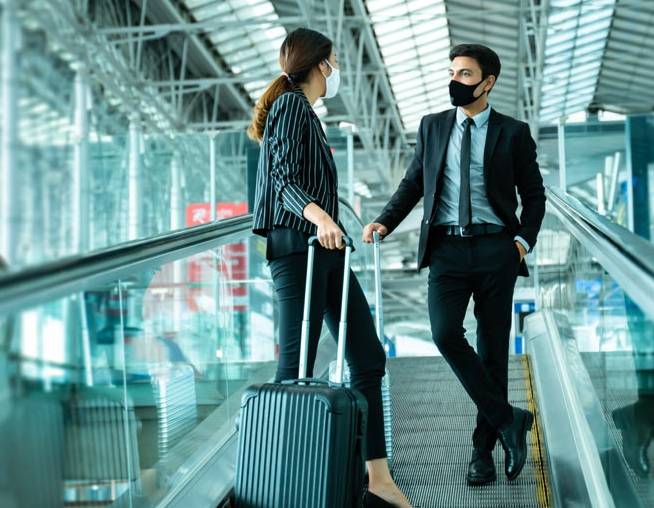Geoff Kitchen was on his way to a six-week holiday across South Asia and Australia with his wife Linda. Ten hours into the flight and in the middle of the breakfast service, Singapore Airlines flight SQ321 from London to Singapore plunged 6,000 feet (1,800 metres) in minutes. The Boeing 777-300ER carrying 211 passengers and 18 crew members made an emergency landing in Bangkok. Kitchen went into cardiac arrest and ultimately died. At least 71 others were injured and 20 people are still in intensive care units in Bangkok. How often does air travel lead to injuries? Compared with the millions of flights that take to the skies each year (40.1 million forecast for 2024), what happened on SQ321 is rare. In the United States, the world’s largest air travel market, there have only been 163 injuries between 2009 and 2022 that required hospitalisation, according to the Federal Aviation Administration. The National Transportation Safety Board hasn’t reported a single turbulence-related death on a large-body aircraft in that period. It’s also almost unheard of for turbulence to bring down an aircraft – let alone a commercial one. Although a plane did crash in 2001, it was because of a technical error and not directly related to turbulence. That was American Airlines flight 587 from New York’s JFK to Santo Domingo, Dominican Republic. The NTSB confirmed that turbulence caused a failure in the aircraft’s vertical stabiliser. What causes turbulence? Turbulence is essentially a disturbance in the air and there are several different types and reasons why it occurs. Terrain like mountains can shift airflow and air is forced to rise over natural terrain that can cause waves of air that trigger turbulence. While weather events can affect turbulence as well, the one that causes the most concern is called clear-air turbulence or CAT. “It can be caused by what are called gravity waves that cause undulations in the air that you can’t see. The only way pilots know about it is to hear about it from a previous pilot. Pilots often listen to what a person who took that same flight path a few minutes earlier say. That’s the best way to detect these turbulence events,” Ramalingam Saravanan, head of the department of atmospheric sciences at Texas A&M University, told Al Jazeera. Have instances of turbulence risen – and is climate change responsible? A study from the University of Reading in England published last year found that between 1979 and 2020, clear-air turbulence rose by 55 percent over the North Atlantic, one of the world’s busiest flight routes. Warmer temperatures can affect wind patterns. The report asserts that greenhouse gas emissions are largely to blame. That’s echoed by researchers at the University of Chicago who forecast that warming temperatures could lead to higher wind speeds in the “fastest upper-level jet stream”. The study suggests that speeds will increase by 2 percent for every degree Celsius the world warms, which is expected to increase by 4 degrees Celsius by the end of the century if greenhouse gases continue to rise at the same level. The global temperature has increased by at least 1.1 degrees Celsius since the pre-industrial era. Over that period, the biggest surge has been since 1975, according to NASA. The University of Chicago researchers say that because of the expected record-breaking wind speeds, airlines will need to slow down speeds to limit the safety impacts of turbulence. Turbulence is expected to increase most drastically in the North Atlantic – the key route between North America and Europe, but there is also a massive surge expected in southeast China, the western Pacific, and northern India. A 2021 study by Nanjing University in China forecast a 15 percent increase in instances of CAT by 2059. The surge in the Asia Pacific region is an increasing concern for the airline industry. China is expected to overtake the United States as the most passenger by volume air travel market by 2037. Who is worst hit when planes suffer from turbulence? The problems with turbulence are more about the safety of the people on board than the plane itself and happens mostly when customers and flight crew are not properly buckled in. Flight crew accounts for 79 percent of all turbulence-related injuries. “Turbulence is a serious workplace safety issue for Flight Attendants,” Sara Nelson, president of the Association of Flight Attendants-CWA, AFL–CIO said in a statement. “While details of Singapore Flight 321 are still developing, initial reports seem to indicate clear-air turbulence, which is the most dangerous type of turbulence. It cannot be seen and is virtually undetectable with current technology. One second, you’re cruising smoothly; the next, passengers, crew and unsecured carts or other items are being thrown around the cabin,” Nelson added. Does air turbulence hurt airline profits? Despite how rare turbulence-related disasters are, turbulence costs the airline industry up to $500m annually. That accounts for damage to the plane and its cabins, delays and the occasional liability payment. With it being more common in the years to come, costs will add up. Under the 1999 Montreal Convention, airlines were also to be held financially responsible for injuries incurred on board by turbulence including for damage to luggage as well as personal injury and even death. “The convention sets forth the jurisdictions where the respective plaintiffs can bring their case, and that’s going to vary based on analysis of each of the passengers’ factual situation. They’re entitled to full compensatory economic damages,” Ladd Sanger, managing partner of Slack Davis Sanger, a Texas-based personal injury law firm with extensive experience in aviation accidents, told Al Jazeera. Airlines are required to comply and pay affected consumers with what are called special drawing rights or SDRs. That’s a reserve asset established by the International Monetary Fund and depending on the nationality of those injured, it can be exchanged for their respective currency. Thanks to the Montreal Convention, airlines are required to pay out the asset unless they can prove that an injury was a result of passenger


















